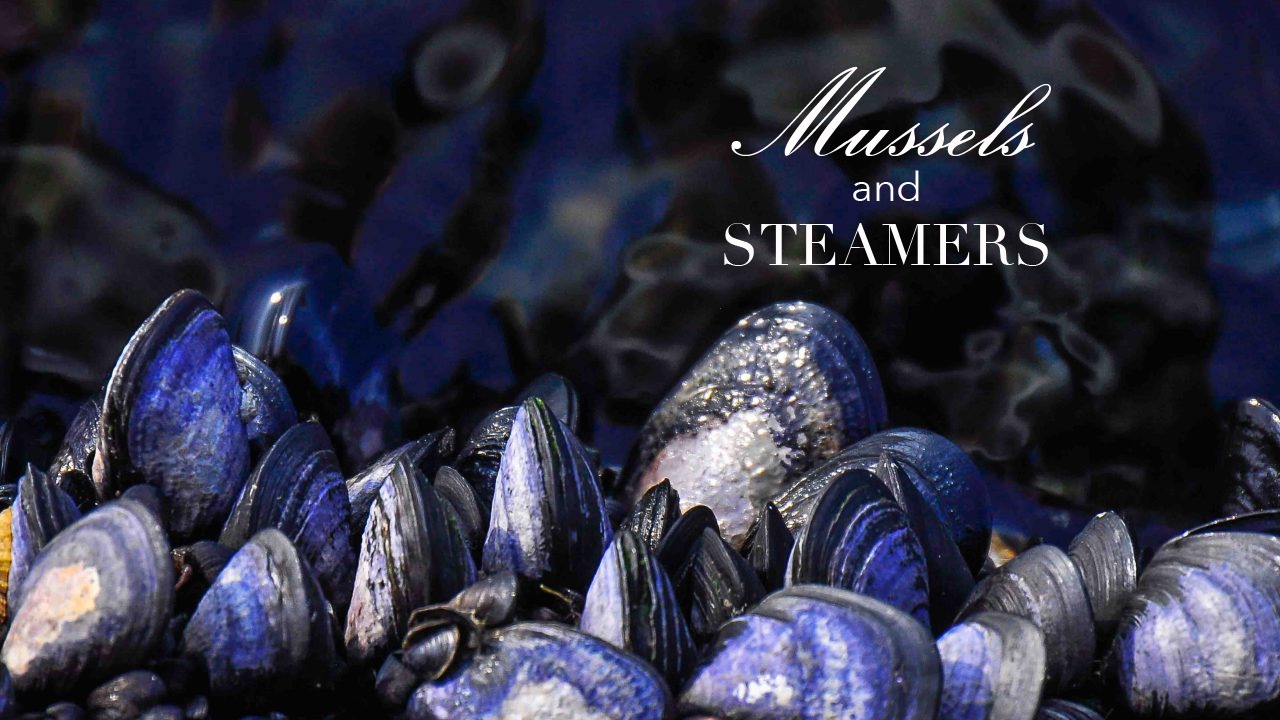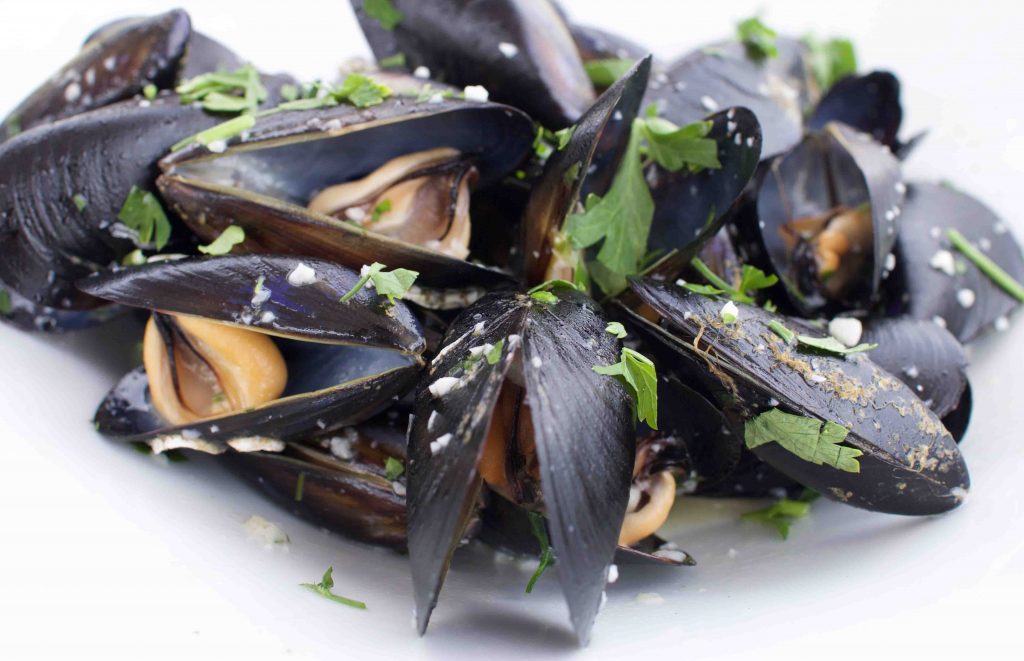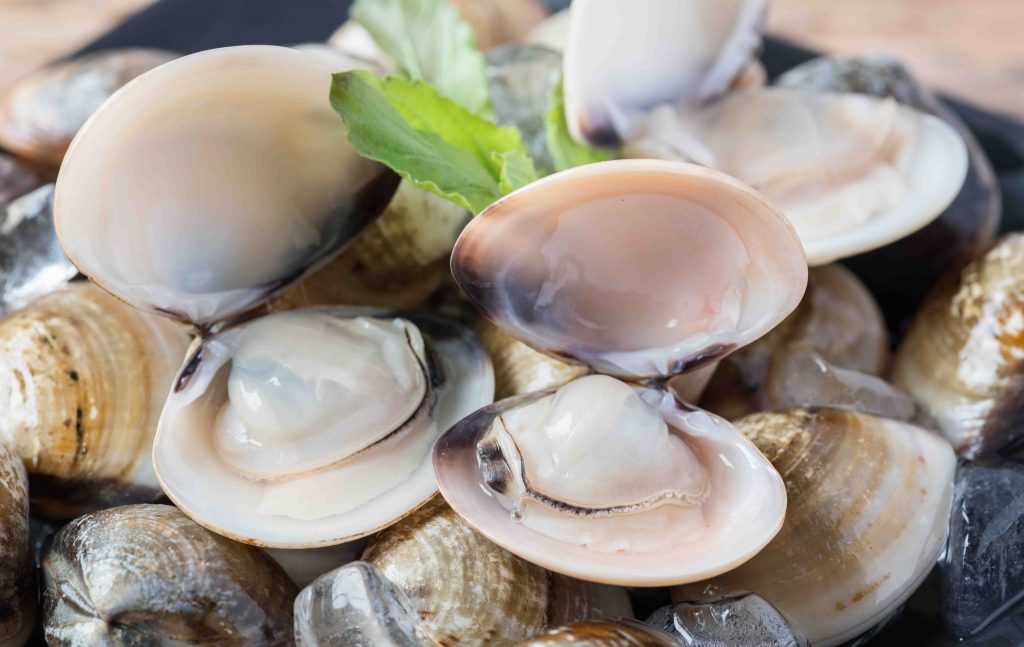Mussels and Steamers

by Rebecca Nimerfroh
It might just be scientifically proven that a dinner of mussels or steamers will taste significantly better if you were the one to have caught them yourself. You sit before your plate, your nose just a little red from the sun, your arms just a bit tired from the rake, but each and every bite is oh so sweet, like you are tasting the very fruit of the sea, and in fact you are. So follow along as we give you the low-down on how to catch and prepare these delectable treats from mother ocean.
Mussels
Although Nantucket’s commercial mussel industry has ceased due to an inconsistent crop (the ones you enjoy at an island restaurant are likely to come from Chatham), you can still harvest them yourself around the island. With a yearlong season, simply get your permit from the licensing office at
4 Fairgrounds Road, a long scallop rake or scallop dredge and set off on your way. However, you will need to find them by boat.
Like the Bay scallop, mussels grow by attaching themselves to something, and therefore, you are likely to find them where the ocean floor has a large gravel consistency. Large mussel beds surround the east side of the island in water 140 feet deep or more, but you don’t need to travel that far. In your boat, you can find them in relatively shallow water, with popular locations being the jetties in the harbor, or Eel Point Channel off Eel Point. Even easier than a rake is to borrow a scallop dredge from a friend.

How To Prepare
Edwin Claflin, Chef and co–owner of Oran Mor Bistro says:
It’s simple. Just butter, shallots, white wine and parsley. Lightly sauté the shallots until they start to get tender, then throw in the mussels with salt and pepper. You want to get the flavor out of the mussels by dry sautéing them, then deglaze with white wine. The wine will make them open up. Then, you typically add a lot more butter than you think you need. It makes you happy.
Soft Shell Clams
Who can resist the delicious, salty sweet bite of a full– bellied clam, especially one from Nantucket? The season for this particular shellfish is fairly strict and limited. Be sure to have your license with you when clamming. The same license is used for quahogs, mussels, eels, oysters, scallops, and soft shell clams (steamers)
Because soft shell clams (or steamers as they are sometimes called) have a fragile shell, care should be taken in digging for them, as they can break easily from a rake. Generally, these clams can be found in marshy, wet areas, such as Shimmo Creek, Coatue and Polpis Harbor. When digging, use a clam hoe to break off the top layer of soil and then dig with your hands. Once harvested, to release the sand inside the steamer bellies, some people opt to soak them in ocean water for a few hours. Note that it must be salt water, however, because fresh water will kill them.

Chef Edwin weighs in,
Almost any shellfish like that you can just sauté. People cook them in beer, in wine or in tomato sauce. You just need a little liquid to make them open up, and they’re sure to be delicious.

